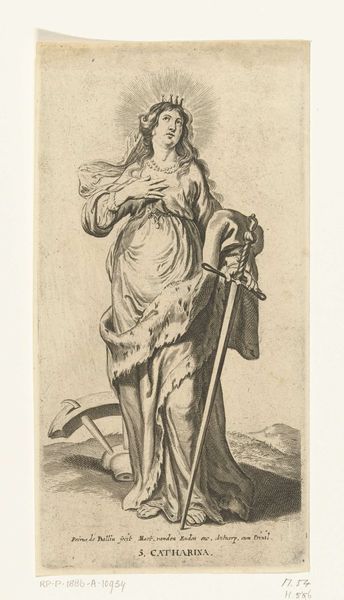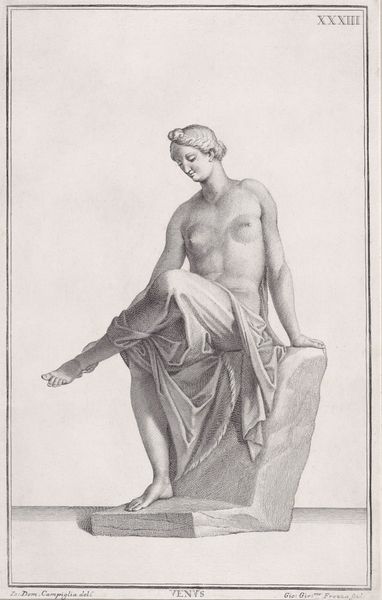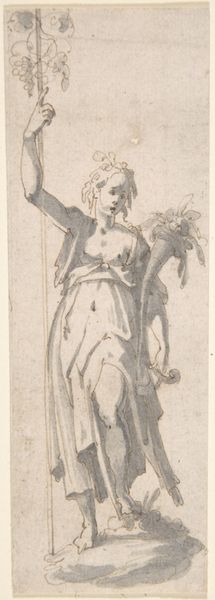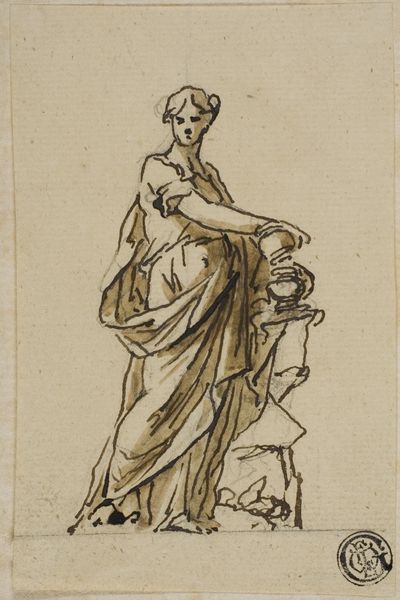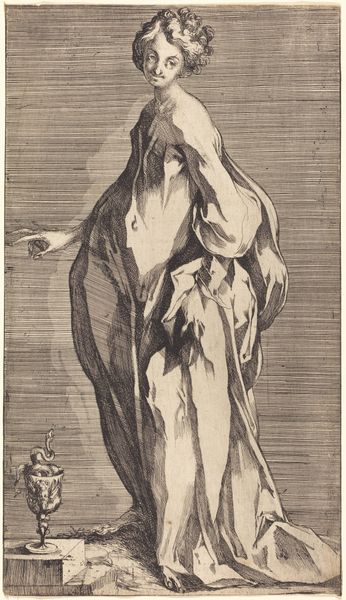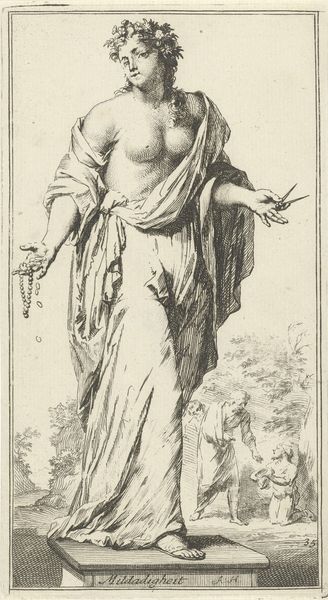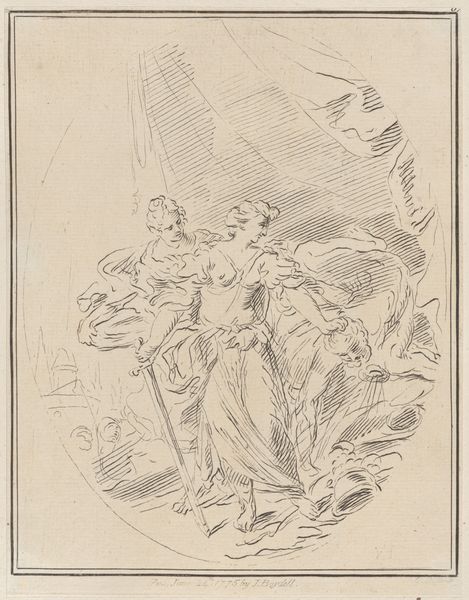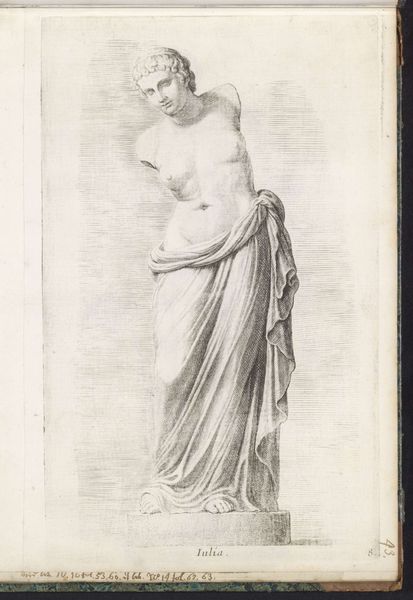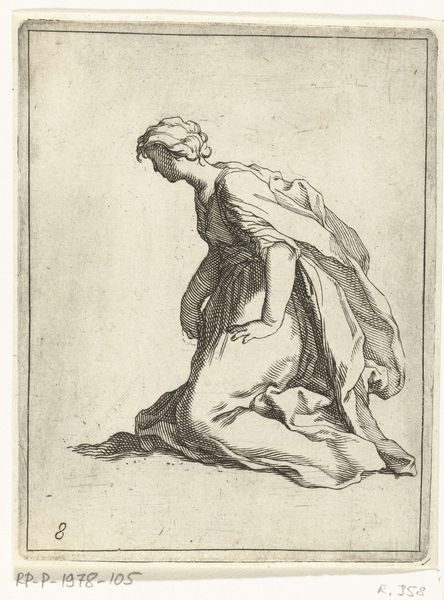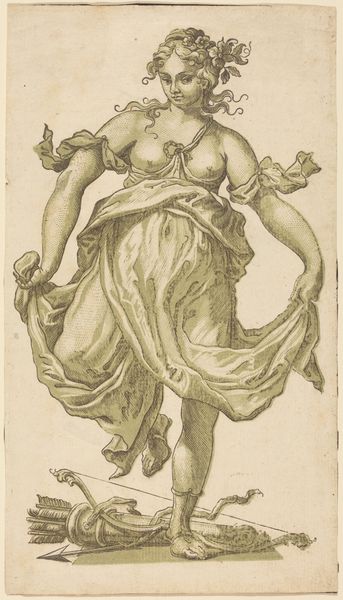
print, etching, engraving
#
baroque
# print
#
pen sketch
#
etching
#
old engraving style
#
figuration
#
nude
#
engraving
Dimensions: height 205 mm, width 150 mm
Copyright: Rijks Museum: Open Domain
Editor: We’re looking at "Woman with a Cloth around her Waist," an engraving made anonymously around 1679 to 1750, here at the Rijksmuseum. I’m struck by the almost sculptural quality of the drapery, how it seems to define the space around the figure. What visual elements stand out to you? Curator: The linear quality is immediately apparent. The artist uses line not just to delineate form, but also to create a sense of volume and texture, particularly in the rendering of the drapery. Note how the density and direction of the lines shift to suggest the fall and weight of the fabric. Editor: So the lines aren’t just outlines; they’re doing a lot more work. It’s like they're building up the form. Curator: Precisely. And consider the pose: the contrapposto, the slight torsion of the figure, how it activates the entire composition. Do you observe how the gaze leads our own? Editor: Yes, her gaze leads the viewer's eyes upwards. I am still mesmerized by the drapery, though. How are we meant to understand the form itself? Curator: Through its intrinsic qualities: the articulation of line, the creation of volume through contrasting densities, the dynamic tension created by the pose. These elements coalesce to produce a sophisticated visual experience. Editor: I see. Focusing on those internal relationships rather than any narrative… it really changes how I appreciate the image. Thanks! Curator: Indeed. The intrinsic formalism guides our perceptions; considering line and structure can be so very informative.
Comments
No comments
Be the first to comment and join the conversation on the ultimate creative platform.



